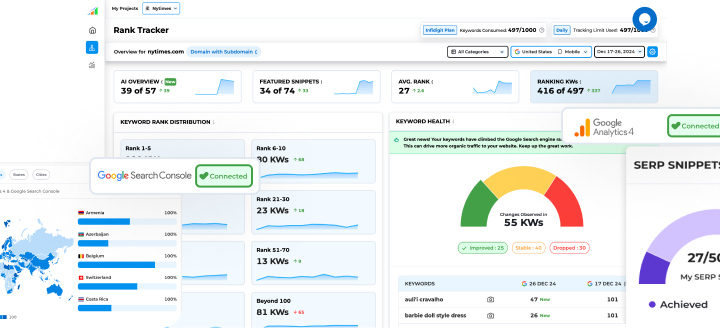Introduction to JavaScript SEO
What is Javascript SEO?
JavaScript SEO is the practice of ensuring a JavaScript-heavy website can be properly crawled and indexed by search engines. It’s a specialized area within technical SEO audit that focuses on optimizing the JavaScript code to facilitate the search engines’ understanding of the content, which is paramount for achieving good rankings.
The Intricate Relationship Between JavaScript and Search Rankings
The relationship between JavaScript and search rankings is nuanced and complex. JavaScript’s versatility allows for dynamic and interactive features on websites, but without proper optimization, search engines might struggle to access and interpret the JavaScript-rendered content. This can negatively impact a site’s visibility in search engine results pages (SERPs), making the interplay between JavaScript and SEO an essential consideration for web developers and SEO professionals alike.
Common Pitfalls in JavaScript SEO Practices
Many JavaScript SEO practices inadvertently impede search engine crawling and indexing and lead to common pitfalls. Here are several to watch out for:
- Incorrect Implementation: Sites that heavily rely on JavaScript might fail to follow best practices, leading to fragmented content delivery or invisible content to search engines.
- Slow Page Load Times: Excessive or unoptimized JavaScript can significantly slow down page loading times, affecting user experience and SEO rankings.
- Blocking JavaScript Files: Disallowing search engines from accessing JavaScript files in the site’s robots.txt can prevent a page’s dynamic content from being indexed.
- Render-Blocking Scripts: Placing JavaScript files in the head of a document without defer or async attributes can delay the rendering of visible content.
- Client-Side Only Rendering: Content generated client-side may not be indexed if search engines can’t execute JavaScript like a user’s browser can.
How Is JavaScript Crawled and Indexed by Google?
Google has advanced its capability to render and understand JavaScript, allowing the search engine’s crawlers to process JavaScript webpages more like a typical user’s browser does. When Googlebot encounters JavaScript it intends to crawl, the following steps usually occur:
- Discovery: Googlebot discovers the URL and adds it to a queue for crawling.
- Crawling: The crawler fetches the page HTML along with its linked JavaScript files.
- Rendering: The JavaScript is executed, generating the DOM – the fully rendered page content.
- Indexing: Content extracted from the rendered DOM is used to generate a version of your page that’s added to Google’s index.
Essential Techniques for Optimizing JavaScript for SEO
1. Server-Side Rendering
Server-Side Rendering (SSR) is an efficient technique where the JavaScript-powered content of a webpage is rendered on the server before being sent to the client’s browser. This means that the initial HTML returned by the server includes the JavaScript content already in place, which can be immediately indexed by search engines.
Pros:
- Search engines receive a complete version of the webpage upon the initial response, enhancing content visibility.
- It ensures a faster First Contentful Paint (FCP), improving user experience and performance metrics.
Cons:
- The process can create a slower Time to First Byte (TTFB), as the server has more work to do upfront.
- Server resources can be more heavily taxed, which may require better optimization and hardware performance to handle load times efficiently.
2. Client-Side Rendering
Client-Side Rendering (CSR) relies on the client’s browser to execute JavaScript and generate the page content. This approach provides a more interactive user experience and reduces initial server load, making it a popular choice for web applications.
Pros:
- This can lead to a more dynamic and engaging user experience due to the browser’s direct manipulation of HTML and DOM elements post-load.
- It can reduce server processing load as the content generation is offloaded to the client’s device.
Cons:
- Content that’s rendered client-side may not be immediately available to search engines, potentially impacting SEO if not managed correctly.
- Might increase the time before users see the fully loaded content, which can affect user retention and engagement.
3. Dynamic Rendering as a Solution for SEO-Friendly JavaScript
Dynamic Rendering is a hybrid solution that serves different content to users versus search engines, aiming to balance the SEO benefits of server-side rendering with the interactivity of client-side rendering. When search engines like Googlebot request a page, they receive a fully rendered HTML version, whereas human visitors receive a JavaScript-heavy client-rendered version.
Pros:
- Ensures that search engines can index JavaScript-generated content without waiting for client-side rendering.
- It can be implemented relatively quickly compared to overhauling a site to fully support SSR.
Cons:
- Adds complexity to the serving infrastructure and may introduce new points of failure.
- Could potentially be seen as cloaking, but Google has indicated they do not perceive it as such when implemented correctly.
To implement dynamic rendering, websites must carefully monitor and detect search engine bots accurately and ensure they maintain equivalent content for both server and client-side rendered versions.
JavaScript Frameworks and Their SEO Implications
SEO Considerations for Popular JavaScript Frameworks
When using popular JavaScript frameworks like Angular, React, Polymer, or Vue, SEO considerations must be made to ensure search engine visibility. Incorporating Python SEO techniques can further optimize these frameworks by automating tasks like log analysis, identifying crawl issues, and improving rendering strategies.
- Angular: Often requires additional server-side rendering solutions, such as Angular Universal, for best SEO performance.
- React: This can be optimized with server-side rendering through frameworks like Next.js, which can significantly improve SEO.
- Vue: Vue’s server-renderer package can be leveraged for SSR, and Nuxt.js offers convention-based SSR for improved SEO.
Best practices include structuring the content for easy extraction by search engines, utilizing pre-rendering services, and making sure that metadata, URLs, and links are not solely JavaScript-driven.
Pre-Rendering as a Strategy for Framework-Based Sites
Pre-Rendering is a strategy where static HTML versions of JavaScript content are generated at build time. When using JavaScript frameworks, pre-rendering can allow search engines to crawl the site more effectively by providing them with snapshots of the content.
Pros:
- It simplifies the serving process and can improve the indexing of JavaScript-heavy sites by search engines.
- Reduces the time to indexable content as search engines can directly access the pre-rendered HTML.
Cons:
- It may not be suitable for sites with highly dynamic content that changes frequently.
- If not updated regularly, pre-rendered pages may serve outdated content to search engines, causing discrepancies between what is indexed and what users see.
For framework-based sites, pre-rendering requires careful consideration of the frequency of site updates, as well as the potential need for dynamic content support, to ensure the benefits outweigh the drawbacks.
How to Optimize the JavaScript Content on Your Website for Search Engines
To optimize the JavaScript content on your website for search engines, consider the following actionable steps:
- Ensure Accessibility: Make sure that all content, including JavaScript-generated content, is accessible to search engine crawlers.
- Leverage Server-Side Rendering (SSR): Implement SSR for critical content to improve its visibility to search engines.
- Minimize and Compress JavaScript Files: Reducing the size of your JavaScript files can speed up load times and improve performance.
- Asynchronous Loading: Use async and defer attributes for non-critical JavaScript files to minimize render-blocking.
- Structured Data Implementation: Implement structured data in JSON-LD format to help search engines understand the content on your site.
- Optimize JavaScript Execution: Analyze and optimize the critical rendering path to reduce the time it takes for important content to be displayed.
- Robots.txt and Meta Tags: Ensure JavaScript files are not blocked by robots.txt and use meta tags appropriately to guide search engine indexing.
By adhering to these strategies, you improve the chances of search engines correctly indexing your JavaScript content and, consequently, your site’s potential to rank well.
Best Practices and Future Trends in JavaScript SEO
Advanced Techniques for Mastering JavaScript SEO
Mastering JavaScript SEO involves an in-depth understanding of both technical SEO fundamentals and advanced optimization techniques:
- Progressive Enhancement: Design your website so content is available without JavaScript, enhancing accessibility for both search engines and users with JavaScript disabled.
- Monitoring and Testing: Regularly use tools like Google Search Console and web crawlers specialized in rendering JavaScript to monitor how search engines view your pages.
- Hydration: For sites using SSR in combination with CSR, ensure the transition is seamless for search engines and users (‘hydration’ refers to attaching event listeners to server-rendered HTML).
- Chunking and Code Splitting: Break large JavaScript applications into smaller chunks so only the necessary code loads for each page, improving load times and crawl efficiency.
- Use of Service Workers: In PWA environments, service workers can be used to cache content and ensure it’s available for search engines to crawl even when a page isn’t being served live.
By integrating these advanced techniques into your JavaScript SEO strategy, you can further optimize search engine performance and enhance user engagement.
Staying Ahead: Anticipating the Evolution of JavaScript SEO
Keeping abreast of the evolution of JavaScript SEO involves staying updated with both the latest best practices and the changing capabilities of search engines. Here are some tips for staying ahead:
- Follow Web Standards: Adhere to web standards and best practices as outlined by the World Wide Web Consortium (W3C) for compatibility and accessibility.
- Continuous Learning: Stay informed about updates from major search engines like Google, which frequently release guidelines and tools for JavaScript rendering and indexing.
- Performance Monitoring: Regularly benchmark and monitor the performance of JavaScript on your site using tools like Lighthouse and PageSpeed Insights.
- Community Engagement: Participate in SEO and developer communities to exchange knowledge on emerging JavaScript SEO techniques.
- Adaptive Testing: Implement continuous testing of JavaScript execution and rendering on various devices and search engines to identify potential SEO issues ahead of time.
By taking these proactive measures, you can prepare your JavaScript content to meet the demands of future search engine algorithms and user expectations.
FAQ: JavaScript SEO Expert Insights
What are the problems with JavaScript SEO?
Some problems with JavaScript SEO include crawlability issues where search engines can’t access content rendered by JavaScript, delayed indexing due to the time required to load and execute scripts, and decreased performance reflected in longer load times which can negatively impact user experience and rankings.
Can search engines fully render JavaScript content?
Search engines like Google are increasingly capable of rendering JavaScript content, but it’s not guaranteed. The ability to fully render JavaScript varies among search engines and is resource-intensive, which may lead to delays or incomplete indexing of dynamic content.
What are the most effective JavaScript SEO tools available today?
Effective JavaScript SEO tools include Google Search Console for monitoring how Google renders and indexes JavaScript content, Lighthouse for performance auditing, Screaming Frog SEO Spider for crawling sites as search engines do, and Chrome DevTools for debugging and optimizing JavaScript execution.
How does client-side rendering affect my site’s SEO?
Client-side rendering may negatively affect SEO by causing delays in content rendering, which can lead to search engines missing content during the crawling process. This can result in pages appearing incomplete or even unindexed in search results, impacting your site’s visibility and user engagement.
Is dynamic rendering necessary for all JavaScript-dependent sites?
Dynamic rendering is not necessary for all JavaScript-dependent sites. It’s a workaround for when search engines struggle to process JavaScript. If your content is already accessible and indexable without it, or if you have implemented server-side rendering, static rendering, or lazy loading, you may not need dynamic rendering.
Popular Searches
How useful was this post?
0 / 5. 0

















